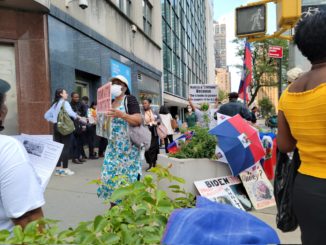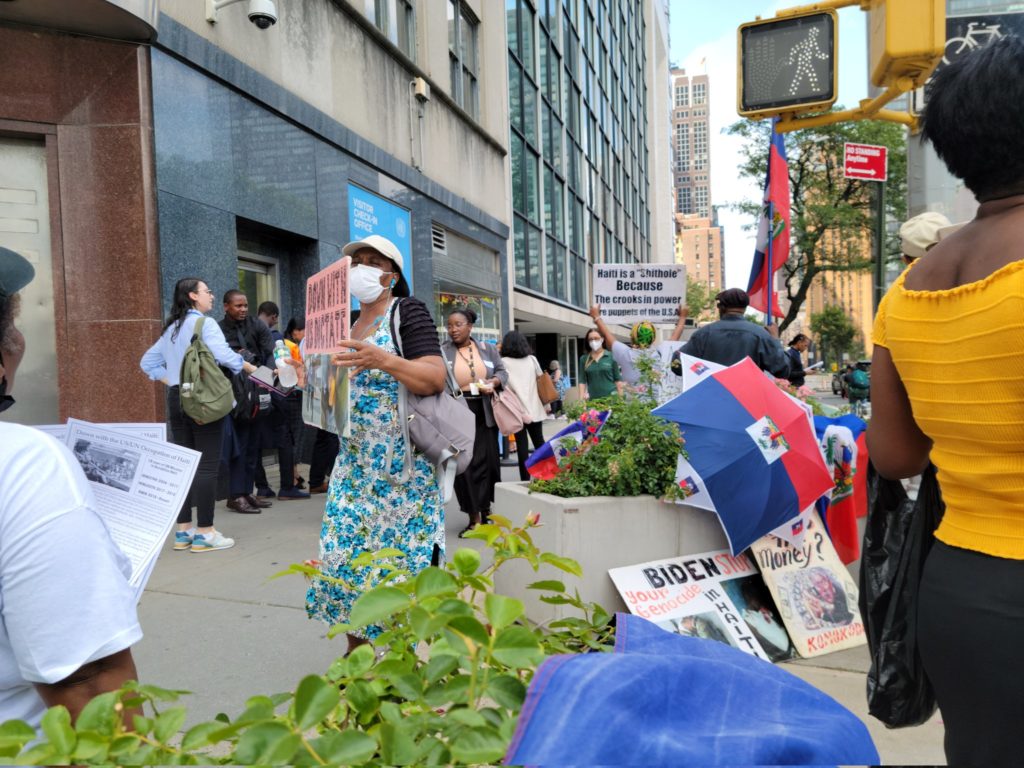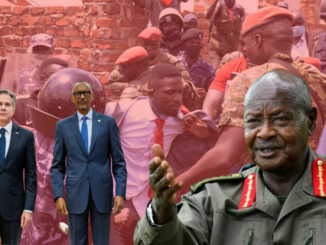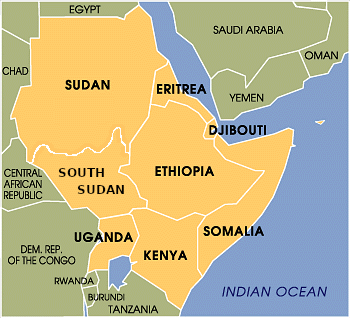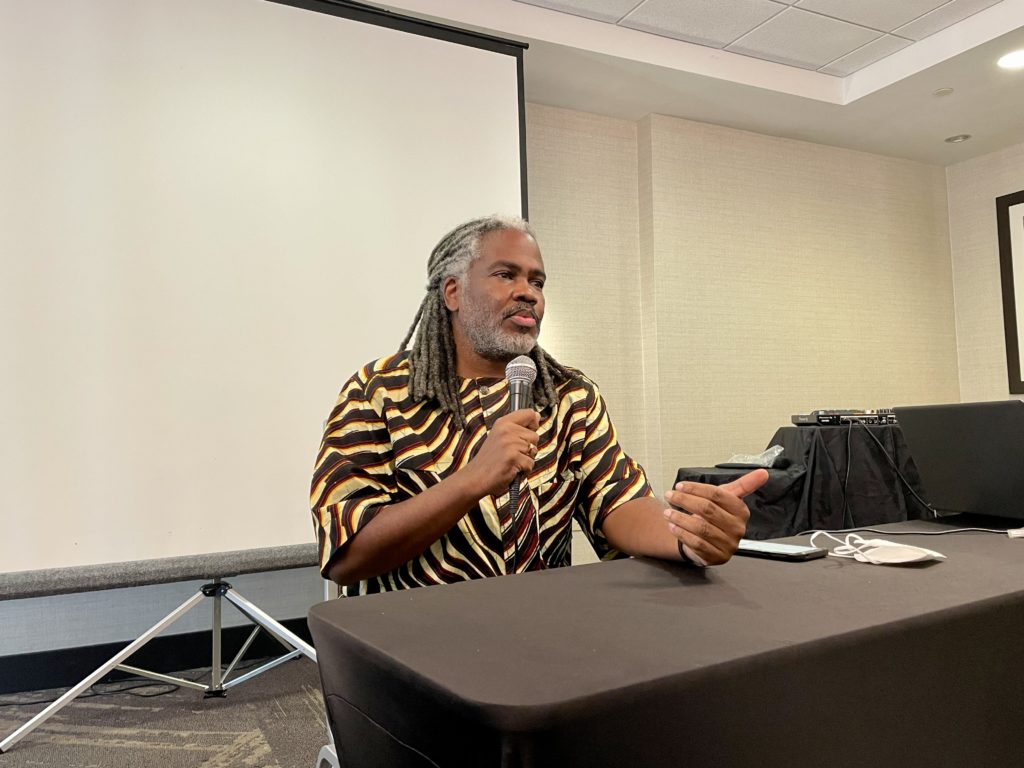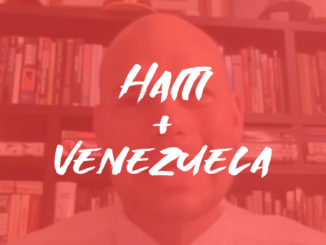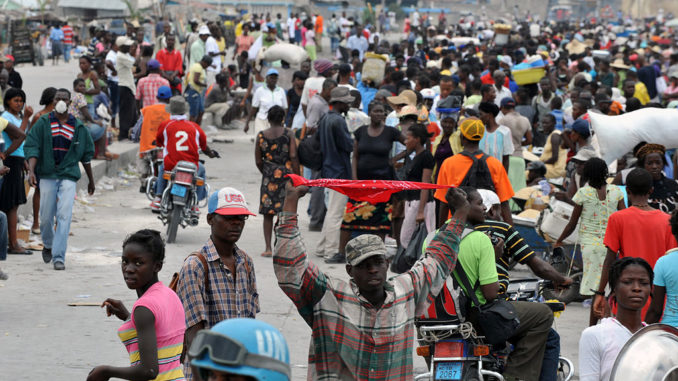
What really happened on the night the president of Haiti was assassinated? We may never know the true story. According to initial reports, the home of Jovenel Moïse was invaded at around 1 a.m. on July 9 by more than two dozen armed men, most of them Colombian nationals, plus at least two U.S. citizens. So far, about 20 suspects have been detained. But some of the hitmen have evaded capture, and three so far are dead. At the moment, the fragile government is being headed by acting Prime Minister Claude Joseph.
Breathless news reports call the events shocking, bordering on unprecedented. But they also note that Haiti has bordered on being a “failed state” for some time. In fact, it crossed that border long ago, and more than 20 heads of state have been assassinated since World War II. The list of countries on that list, in just the Western Hemisphere, includes Bolivia, Nicaragua, the Dominican Republic and Grenada.
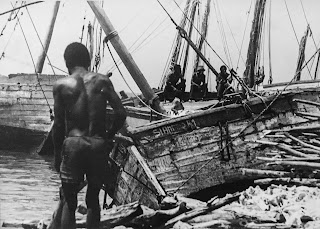 In 1946, Bolivian President Gualberto Villaroel was killed by a lynch mob in La Paz. Dominican Republic strongman Rafael Trujillo Molina was gunned down in 1961; his assassins included one of his generals. Nicaraguan President Anastasio Somoza was murdered in 1980. And Grenada’s Prime Minister Maurice Bishop was killed by local militants in 1983. Six days later, the United States led an invasion and ousted the regime that had attempted to replace Bishop.
In 1946, Bolivian President Gualberto Villaroel was killed by a lynch mob in La Paz. Dominican Republic strongman Rafael Trujillo Molina was gunned down in 1961; his assassins included one of his generals. Nicaraguan President Anastasio Somoza was murdered in 1980. And Grenada’s Prime Minister Maurice Bishop was killed by local militants in 1983. Six days later, the United States led an invasion and ousted the regime that had attempted to replace Bishop.Other prominent heads of state who have died violently since 1945 include Indian leader Mohandas Gandhi, Iraq’s King Faisal, Pakistani Prime Minister Liaquate Ali Khan, South Vietnam President Ngo Dinh Diem, South African Prime Minister Henrik Verwoerd, Iranian President Mohammed Ali Rajai, Iranian Prime Minister Hojjatoleslam Mohammed Javad Bahonar, Egyptian President Anwar Sadat, Lebanon President-elect Beshir Gemayel, Indian Prime Minister Indira Gandhi, Swedish Prime Minister Olof Palme, and, of course, U.S. President John F. Kennedy.
Still, Haiti does have an especially violent past. In July 1915, for example, its head of state, Vilbrun Guillaume Sam, was cornered in the French embassy by rebel forces. The insurgents had widespread popular support. This also was no shock, since Sam was known as a rampaging, vindictive thug, who had seized the government by force and murdered hundreds of his political enemies before running for cover. When a mob finally found him cowering in an attic, they hacked their president to pieces.
The island nation, once known as the “pearl of the antilles,” had been through seven presidents in the past four years, most of them killed or removed prematurely. The rural north was under the control of the Cacos, a rebel movement that adopted its name from the cry of a native bird. Although widely portrayed as a group of murderous bandits, the Cacos were essentially nationalists, and were attempting to resist the control of France, the United States and the small minority of mulattos who dominated the economy.
But a Haiti run by rebels and peasants was not acceptable to U.S. interests, which considered the nation an endangered investment property. The National City Bank controlled the country’s national bank and railroad system, and sugar barons viewed the country’s rich plantations as promising takeover targets. Thus, on July 29, 1915, after several weeks of observation from cruisers anchored offshore, two regiments of Marines landed. Their initial objective was to make certain that the U.S. choice, Senator Philippe Sudre Dartiguenave, was installed as head of state. A snap-election was staged less than two weeks later.
“When the National Assembly met, the Marines stood in the aisles with their bayonets until the man selected by the American Minister was made President,” recalled Smedley Butler, the Marine hero who led the decisive military campaign and administered Haiti’s local police force during the following two years. “I won’t say we put him in,” Butler wrote later. “The State Department might object. Anyway, he was put in.”
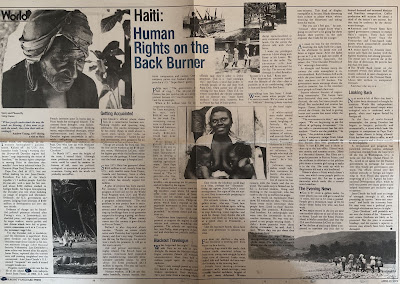 April 1978 feature story, Vanguard Press / credit: Greg Guma April 1978 feature story, Vanguard Press / credit: Greg Guma |
Few journalists were on hand in 1915, and most newspapers were willing to accept the official version. According to U.S. President Woodrow Wilson, establishing a protectorate was part of a grand effort to halt a radically evil and corrupting revolution, support the slow process of reform, and extend his policy of the open door to the world.
But that was just the official story. Actually, Wilson saw the island nation as a geo-strategic pawn in the build-up to World War I; specifically, he was worried that Germany might take advantage of the local political turmoil to establish a military base in the hemisphere. He also had other, largely economic reasons to seize control of the country. Haiti was an endangered investment property.
During the early years of the U.S. occupation, the Cacos continued to resist, under the leadership of their own “Sandino,” an army officer turned guerrilla leader named Charlemayne Peralte. Murdered by a U.S. Marine in 1919, Peralte became a symbol for the democracy movement of the late 1980s that ultimately led to the election of the liberation theology priest, Jean Bertrand Aristide.
In the 1990s, it happened again. Seven months after Aristide’s 1991 election, he was overthrown in a military coup. It took three years, but by 1994 Haiti’s plight was big news. The coverage was highly selective, however, never mentioning CIA support for those who conducted the coup or the Haitian military’s involvement in drug trafficking. Prior to this U.S. occupation, the media also was suspiciously silent about, as Aristide put it, a sham embargo that squeezed the poor but exempted businesses. Although an oil embargo was imposed, fuel was easily smuggled into the country from the Dominican Republic. Meanwhile, a smear campaign against Aristide was launched.
Just as Wilson had veiled his autocratic actions on behalf of U.S. economic interests with rhetoric about stability and democracy, U.S. President Bill Clinton talked about upholding democracy. In fact, the central objective of the 1990s occupation was to maintain effective control of the country until Aristide’s term expired. Media coverage tended to obscure the obvious: the United States, never comfortable with Aristide, had entered into an agreement with the Haitian military for national co-management until the next elections.
 Looking back, most policy-makers and analysts suggested that the U.S. had entered Haiti in 1915 only to restore stability. Few stressed that some sort of revolution was underway; even those who did invariably described the situation as chaotic. According to conventional wisdom, the United States remained in Haiti for 19 years in the early 20th century because the Haitian people could not effectively govern themselves or sustain democratic institutions. They weren’t ready in 1915 and, some skeptics claimed, they still weren’t in the 1990s.
Looking back, most policy-makers and analysts suggested that the U.S. had entered Haiti in 1915 only to restore stability. Few stressed that some sort of revolution was underway; even those who did invariably described the situation as chaotic. According to conventional wisdom, the United States remained in Haiti for 19 years in the early 20th century because the Haitian people could not effectively govern themselves or sustain democratic institutions. They weren’t ready in 1915 and, some skeptics claimed, they still weren’t in the 1990s.
At a September 1994 rally, U.S. presidential candidate and businessperson Ross Perot echoed this popular prejudice in his own know-nothing style. “Haitians like a dictator,” he announced, “I don’t know why.” The implication, underscoring his opposition to U.S. intervention, was that he also didn’t care what happened there, and neither should most people.
The Bush administration may have counted on a similar reaction when it embraced a violent uprising against Aristide beginning in late 2003, or even after it reportedly forced him to sign a resignation letter at 2 a.m. on Sunday, February 29, 2004. According to the “ex-president,” he was kidnapped at gunpoint, and flown without his knowledge to the Central African Republic. This should not be so hard to believe, since Aristide never had the Bush administration’s support, and his inability to maintain order in an atmosphere of U.S.-backed destabilization provided an excellent pretext for another exercise in “regime change.”
In early February, a “rebel” paramilitary army crossed the border from the Dominican Republic. This trained and well-equipped unit included former members of The Front for the Advancement of Progress in Haiti (FRAPH), a disarming name for plainclothes death squads involved in mass killing and political assassinations during the 1991 military coup that overthrew Aristide’s first administration. The self-proclaimed National Liberation and Reconstruction Front (FLRN) was also active, and was led by Guy Philippe, a former police chief and member of the Haitian Armed Forces. Philippe had been trained during the coup years by U.S. Special Forces in Ecuador, together with a dozen other Haitian Army officers. Two other rebel commanders were Emmanuel “Toto” Constant and Jodel Chamblain, former members of the Duvalier era enforcer squad, the Tonton Macoute, and leaders of FRAPH.
Both armed rebels and civilian backers like G-184 leader Andre Apaid were involved in the plot. Apaid was in touch with U.S. Secretary of State Colin Powell in the weeks leading up to Aristide’s overthrow. Both Philippe and Constant had past ties to the CIA, and were in touch with U.S. officials.
On February 20, 2004, U.S. Ambassador James Foley called in a team of four military experts from the U.S. Southern Command, based in Miami, according to the Seattle Times. Officially, their mandate was to assess threats to the U.S. embassy in Port-au-Prince and its personnel. Meanwhile, as a “precautionary measure,” three U.S. naval vessels were placed on standby to go to Haiti. One was equipped with vertical takeoff Harrier fighters and attack helicopters. At least 2,000 Marines also were ready for deployment.
After Aristide’s kidnapping, Washington made no effort to disarm its proxy paramilitary army, which was subsequently tapped to play a role in the transition. In other words, the Bush administration did nothing to prevent the killing of Lavalas and Aristide supporters in the wake of the president’s removal. In news coverage of the crisis, both Haiti’s dark history and the role of the CIA were ignored. Instead, so-called rebel leaders, commanders of death squads in the 1990s, were recognized as legitimate opposition spokesmen.
The Bush administration effectively scapegoated Aristide, holding him solely responsible for a worsening economic and social situation. In truth, Haiti’s economic and social crisis was largely caused by the devastating economic reforms imposed by the International Monetary Fund beginning in the 1980s. Aristide’s 1994 return to power was conditioned on his acceptance of IMF economic “therapy.” He complied, but was blacklisted and demonized anyway.
Which raises a key question: Why does this keep happening? One reason may be basic geopolitics. Hispaniola (the island that contains Haiti and the Dominican Republic) is a gateway to the Caribbean basin, strategically located between Cuba to the northwest and Venezuela to the south. Thus, having a military presence on the island, or at least leverage with whatever regime emerges, can help to sustain political pressure on other countries nearby, while providing a base to step in as part of any regional military operation deemed necessary in the future.
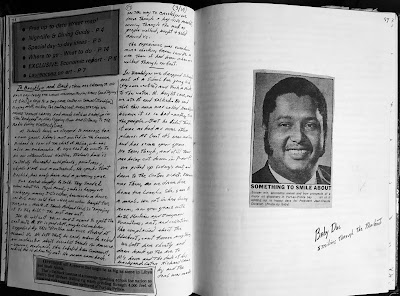 |
| Diary kept during 1977 visit / credit: Greg Guma |
Photos in this article are courtesy of the writer.
Greg Guma has been a writer, editor, historian and progressive manager for half a century, leading businesses and campaigns in Vermont, New Mexico and California. His early work with Bernie Sanders led to The People’s Republic: Vermont and the Sanders Revolution. His other books include novels, Spirits of Desire and Dons of Time, and non-fiction like Fake News: Journalism in the Age of Deceptions and the forthcoming Restless Spirits & Popular Movements: A Vermont History.

